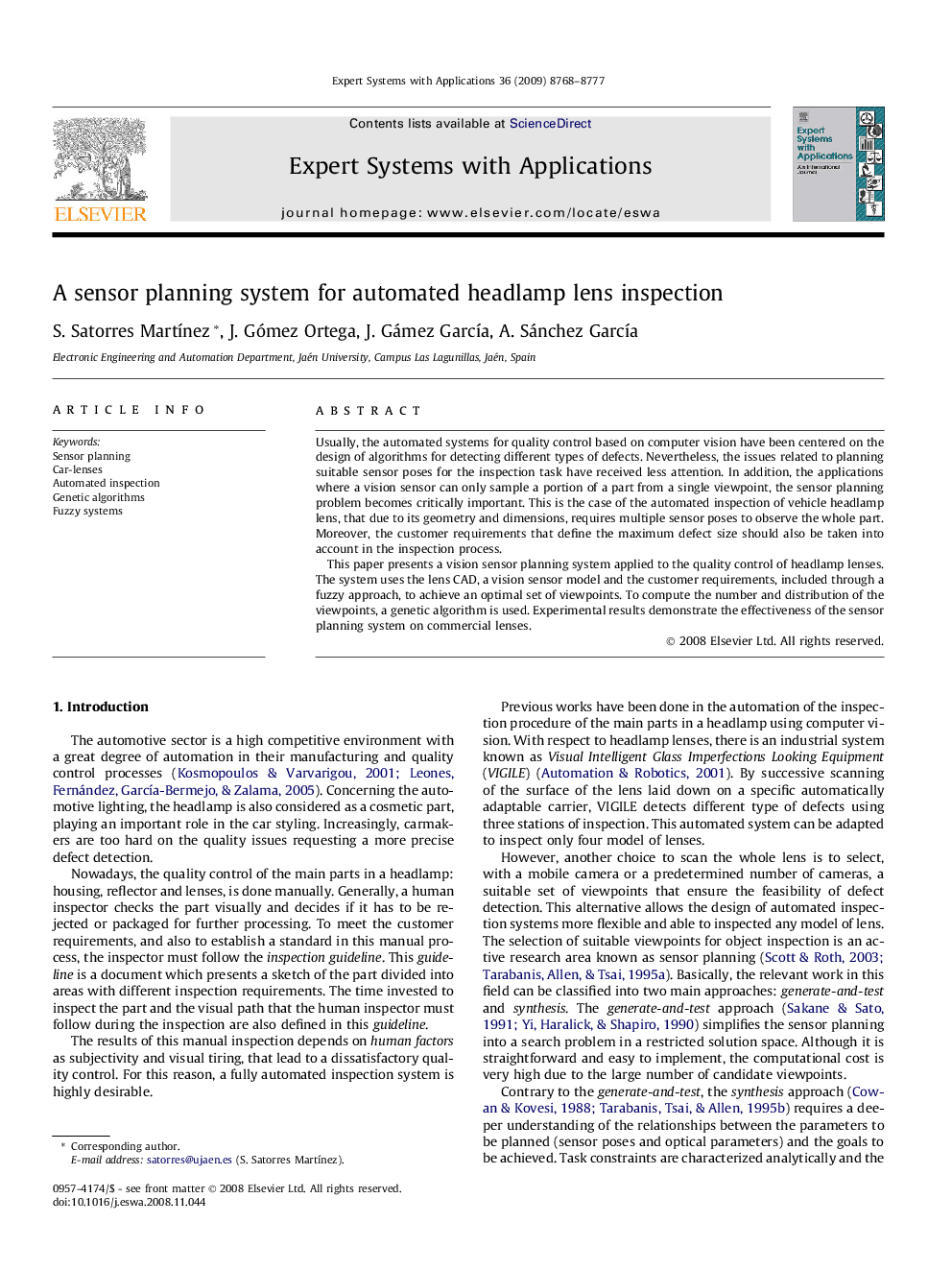| Article ID | Journal | Published Year | Pages | File Type |
|---|---|---|---|---|
| 386923 | Expert Systems with Applications | 2009 | 10 Pages |
Usually, the automated systems for quality control based on computer vision have been centered on the design of algorithms for detecting different types of defects. Nevertheless, the issues related to planning suitable sensor poses for the inspection task have received less attention. In addition, the applications where a vision sensor can only sample a portion of a part from a single viewpoint, the sensor planning problem becomes critically important. This is the case of the automated inspection of vehicle headlamp lens, that due to its geometry and dimensions, requires multiple sensor poses to observe the whole part. Moreover, the customer requirements that define the maximum defect size should also be taken into account in the inspection process.This paper presents a vision sensor planning system applied to the quality control of headlamp lenses. The system uses the lens CAD, a vision sensor model and the customer requirements, included through a fuzzy approach, to achieve an optimal set of viewpoints. To compute the number and distribution of the viewpoints, a genetic algorithm is used. Experimental results demonstrate the effectiveness of the sensor planning system on commercial lenses.
